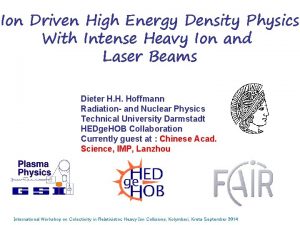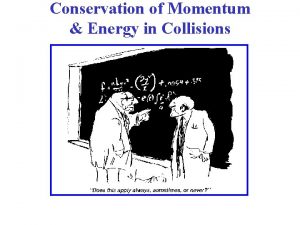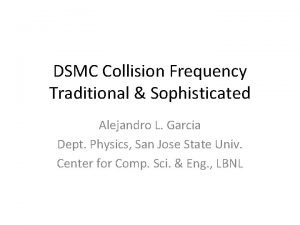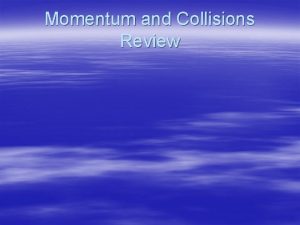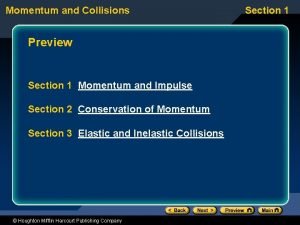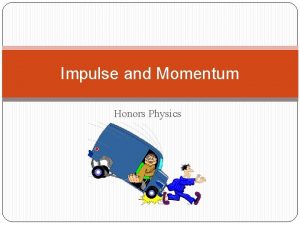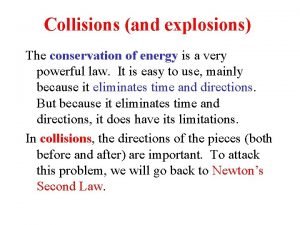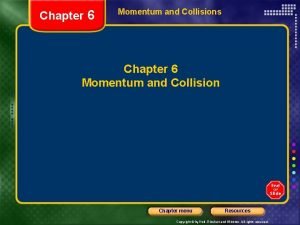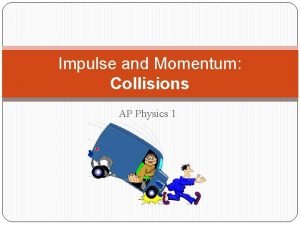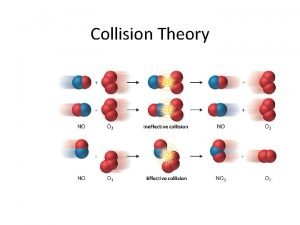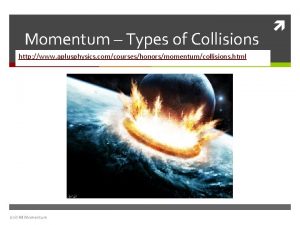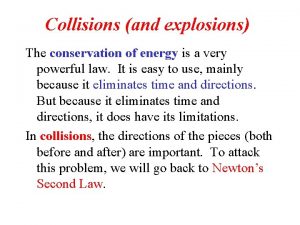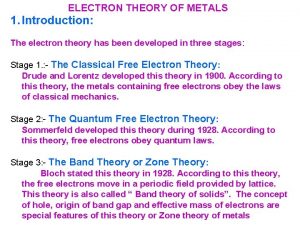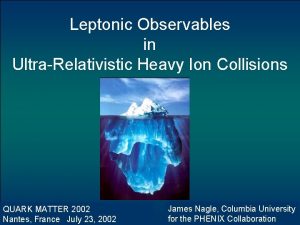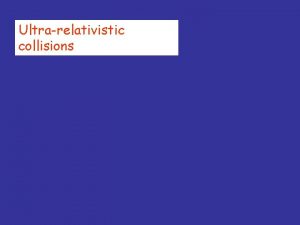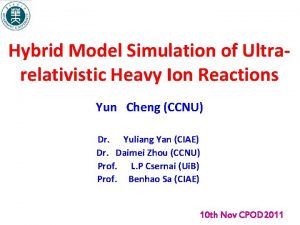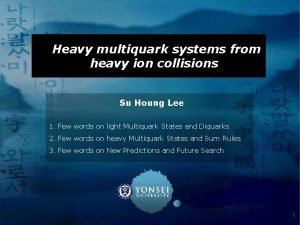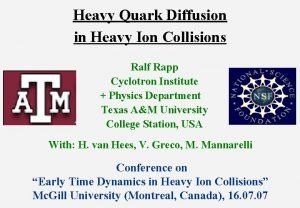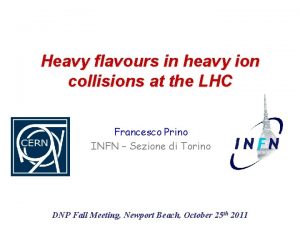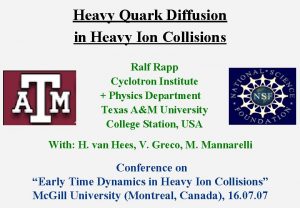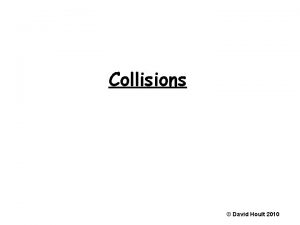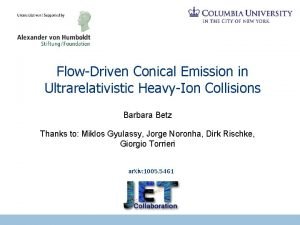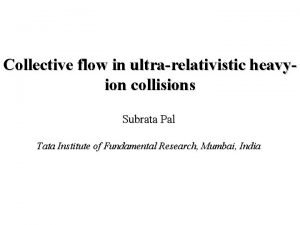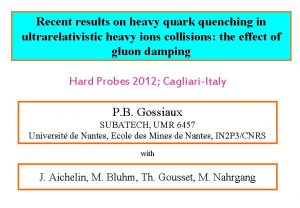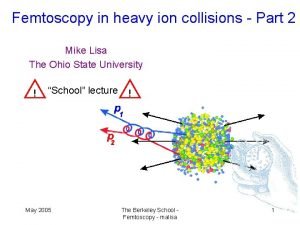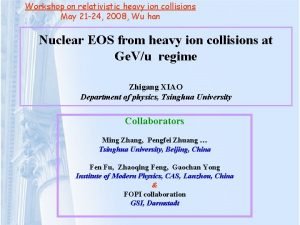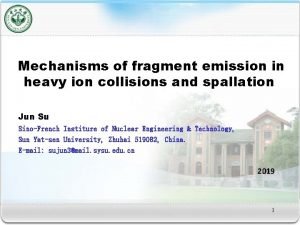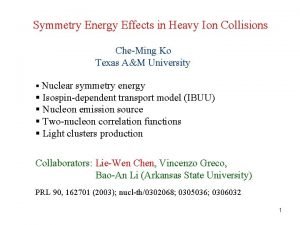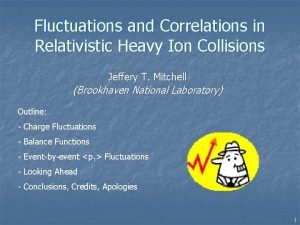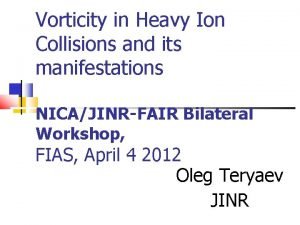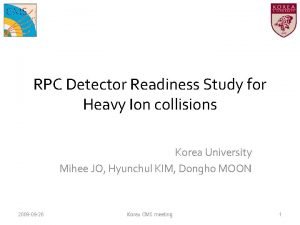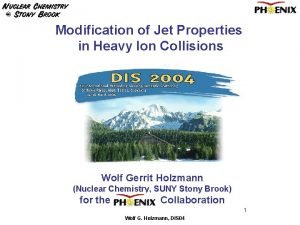Ultrarelativistic heavy ion collisions from discovery to detailed























- Slides: 23

Ultra-relativistic heavy ion collisions: from discovery to detailed analysis Urs Achim Wiedemann CERN PH-TH 7 th France China Particle Physics Laboratory (FCPPL) Workshop Clermont-Ferrand, 8 -10 April 2014

From elementary interactions to collective phenomena 1968: electroweak theory = leptons + gauge invariance 1973: asymptotic freedom QCD = quark model + gauge invariance Today: mature theory with a precision frontier How do collective phenomena and macroscopic properties of matter emerge from fundamental interactions? Standard Model is much richer than QED: • non-abelian quantum field theories • for QCD, degrees of freedom change with

Phase transitions of elementary quantum fields Properties of the Higgs field(s) ATLAS, 1207. 7214 Morrissey, Ramsey-Musolf 1206. 2942 determine elwk. phase transition in the hot & dense Early Universe - Mass generation - Baryon asymmetry requires understanding the Standard Model at finite temperature.

Are the high-T phases of the Standard Model experimentally accessible? • Electroweak sector not within exp. reach. • Strong sector Wuppertal-Budapest, ar. Xiv: 1005. 3508, ar. Xiv: 1007. 2580 Within experimental reach.

How to test thermodynamic QGP properties? Fluid dynamics is the fundamental theory of a locally equilibrated system. • based only on: E-p conservation: 2 nd law of thermodynamics: • sensitive only to properties of matter that are calculable from first principles in quantum field theory - EOS: and sound velocity - transport coefficients: shear , bulk viscosity, conductivities … - relaxation times: , , …

Question: Why do we need collider energies to test properties of dense QCD matter which arise on typical scales ?

Answer 1: Large quantitative gains Increasing the center of mass energy implies Denser initial system Longer lifetime Bigger spatial extension Stronger collective phenomena More statistics per event to test collectivity A large body of experimental data from the CERN SPS, RHIC and LHC supports this argument.

Elliptic Flow: hallmark of a collective phenomenon Compilation ALICE, PRL 105, 252302 (2010)

How do we know that v 2 signals collectivity? Consider particle production w. r. t. reaction plane: • Single 2 ->2 process • Maximal asymmetry • NOT correlated to the reaction plane • Many 2 ->2 or 2 -> n processes • Reduced asymmetry • NOT correlated to the reaction plane • final state interactions • asymmetry caused not only by multiplicity fluctuations • collective component is correlated to the reaction plan • limiting case: zero mean free path => fluid dynamics

Particle production w. r. t. reaction plane ● Want to measure particle production as function of angle w. r. t. reaction plane But reaction plane is unknown. . . ● Have to measure particle correlations: “Non-flow effects” But this requires signals ● Improve measurement with higher cumulants: This requires signals Borghini, Dinh, Ollitrault, PRC (2001)

v 2 @ LHC ● Several independent methods to measure ● Momentum space Reaction plane • Signal implies 2 -1 asymmetry of particles production w. r. t. reaction plane. • ‘Non-flow’ effect for 2 nd order cumulants do not characterize solely collectivity. Strong Collectivity !

1 st conclusions from fluid dynamic modeling Assumptions: - fluid with shear viscous term - ‘realistic’ initial conditions & decoupling Results: - initial transverse pressure gradient - dependence of flow field elliptic flow - size and pt-dependence of accounted for by fluid of minimal shear viscosity data - characteristic mass dependence, since all particle species emerge from common flow field H. Song et al. PRL 106 (2011) 192301 Z. Qiu et al. , Phys. Lett. B 707 (2012) 151 P. Romatschke ar. Xiv. 0902. 3663

1 st conclusions continued • Value of shear viscosity minimal, => perfect liquid, Arnold, Moore, Yaffe, JHEP 11 (2000) 001 strongly coupled plasma • Shear viscosity minimal => expansion is close to isentropic For 1 -dim expanding fluid (Bjorken boost -invariant), entropy density s increases like Isentropic “perfect liquid” applies if Strong coupling limit of N=4 SYM Kovtun, Son, Starinets, hep-th/0309213

1 st conclusions continued … • Fluid dynamics applies at In perturbative scenario: hydro valid if Heller, Janik Witaszczyk, PRL 108 (2012) 201602 but => non-perturbative thermalization Chesler, Yaffe, PRL 102 (2009) 211601 • • Very fast, non-perturbative isotropization Perturbatively require but Such a plasma is unique in that it does not carry quasi-particle excitations Establishing this conjecture is one of the main drivers for future EXP&TH H-T. Ding et al, ar. Xiv: 1012. 4963 Quasi-particle peak melts

Minimal dissipation Maximal Transparency to Fluctuations • Fluctuation damping controlled by sound attenuation length final Pics by B. Schenke Much to be learnt from varying scale of fluctuation e. g. initial • Experimental control on properties of Eby. E fluctuations Fluid dynamical response to spatial eccentricities given by vn in momentum distributions Alver and Roland, 2009 Fig from M. Luzum, ar. Xiv: 1107. 0592

Flow as linear response to spatial asymmetries Characterize spatial eccentricities, e. g. , via moments of transverse density ALICE, ar. Xiv: 1105. 3865, PRL LHC data indicate: Spatial eccentricity is related approx. linearly to (momentum) flow for n=2, 3

Sensitivity to non-linear fluid dynamic response • Non-linear response seen e. g. in reaction plane correlations • Fluid dynamics as perturbation theory of fluctuations on non-perturbative background S. Flörchinger, UAW et al. ar. Xiv: 1312. 5482 Flow measurements are correlation measurements. Long term goal is to disentangle sources of correlations: i) Fluctuating initial conditions (geometrical origin, quantum origin) ii) Hydrodynamic evolution (dynamical origin) iii) Hadronization (kinematic origin) Teaney, Yan, ar. Xiv: 1312. 3689

A (valid) analogy From a signal … via fluctuations … to properties of matter Progress via more differential measurements & analysis Slide adapted from W. Zajc

A field with fundamental open questions • How does/Does fluid dynamics extend to smaller systems? (p-A and light-ion collisions, analysis of CMS p-p ridge) => test of thermalization/isotropization time • What is the p. T-range of fluid dynamics? (at sufficiently high resolution scale, particle-like excitations must exist – what sets this scale? ) => test of ‘no quasiparticle conjecture’ • On which scale do hard probes such as jets and heavy quarks ‘flow’ with the medium? test of ‘no quasiparticle conjecture’ • Can we constrain bulk viscosity? test of ‘non-conformality’ at finite T • … … … T. Schäfer, QM 12

Open heavy flavor at low pt • ‘No-quasiparticle conjecture’ implies that light low-momentum dressed quarks do not exist (i. e. do not propagate beyond ) In contrast, charm & bottom propagate (consequence of flavor conservation). How? • At low pt, Langevin dynamics determines how charm & beauty quarks move: The perfect liquid is source of random forces calculable from 1 st principles in quantum field theory, e. g. in strong coupling limit: • This hard probe is unique in that we have first experimental indications of flow. Much more differential characterization needed to constrain Langevin dynamics. (High luminosity requirement!).

Finally, a minimal comment on high-p. T: “Jet Quenching” Jet “=“ characterization of hadronic final state of a QCD parton shower. Can this parton shower be modified in heavy ion collisions? Hard production process: Occurs on time & distance scale d ~1/ET << mean free path Unaffected by surrounding QCD matter QCD (final state) Parton Shower: Must traverse an in-medium path length up to O(10 fm/c) On the QCD scale, a long time to interact with QCD matter. Jet quenching = in-medium modification of final state QCD parton showers. Provides unique access to thermal history of the collision.

How do high-momentum partons propagate? - theory In a perfect liquid (Ad. S/CFT view) In system with finite mean free path • Light partons/jets thermalize (no collinear structure remains) • Light hard partons fragment in medium (Energy moved to softer scales/larger angles but collinear dynamics persists) • Heavy quarks loose momentum via sound modes and wake Chesler, Yaffe ar. Xiv: 0712. 0050 • Heavy quarks fragment with smaller branching probabilities (dead-cone effect) testable hierarchy in mass and color charge • For , mass unimportant. In high energy limit (eikonal limit) determined by Q: How does the rich phenomenology of jet quenching relate to the fluid dynamic nature of soft particle production?

Take-home message • Strong evidence for perfect liquid behavior in heavy ion collisions at RHIC and at the LHC • To turn this discovery into a chapter in the ultimate QCD textbook, we need to understand How is minimal dissipation realized in a strongly coupled non-abelian medium without quasi-particle? • This requires - much more differential experimental tests (small fraction of them mentioned in this talk) - theory developments
 What does ratey stand for
What does ratey stand for Heavy ion
Heavy ion Qué son las fuerzas intramoleculares
Qué son las fuerzas intramoleculares Induced dipole induced dipole interaction
Induced dipole induced dipole interaction Ejemplo de fuerza ion ion
Ejemplo de fuerza ion ion Dipolo dipolo inducido
Dipolo dipolo inducido How do we know momentum is conserved
How do we know momentum is conserved Collision frequency
Collision frequency A moderate force will break an egg
A moderate force will break an egg Collisions
Collisions Types of collision
Types of collision Momentum is conserved in all collisions
Momentum is conserved in all collisions Elastic collision vs inelastic
Elastic collision vs inelastic To avoid collisions a defensive driver should
To avoid collisions a defensive driver should Collisions and explosions
Collisions and explosions Chapter 6 momentum
Chapter 6 momentum Impulse and acceleration
Impulse and acceleration Empty space between traffic clusters
Empty space between traffic clusters Collision theory diagram
Collision theory diagram Aplusphysics momentum-conservation answer key
Aplusphysics momentum-conservation answer key Prévention des collisions engins-piétons
Prévention des collisions engins-piétons Collisions
Collisions To avoid collisions a defensive driver should
To avoid collisions a defensive driver should Success of classical free electron theory
Success of classical free electron theory

